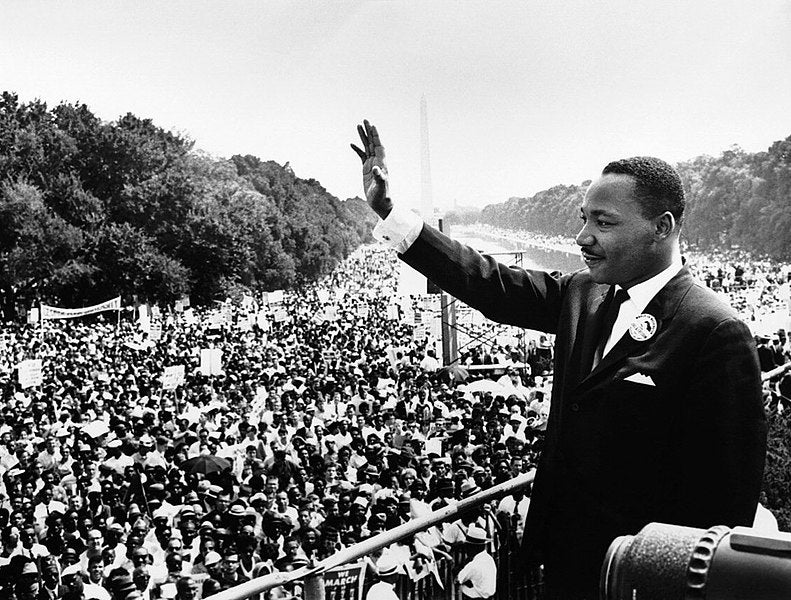Many consider Philadelphia the birthplace of the United States. It’s where the Founding Fathers signed the Declaration of Independence, Benjamin Franklin discovered electricity, and Thomas Paine published Common Sense. Too often though, the dominant narrative of Philadelphia history focuses on the accomplishments of white men, leaving out the equally important contributions of other groups including people of color and women. This past weekend, students from 15 Philadelphia-area high schools came together through the AspenX program to learn about the untold history of race in Philadelphia and tell their own stories.
AspenX is a two-day program during which high school students immerse themselves in critical issues of the day through virtual and experiential learning coupled with expert-moderated, in-person dialogue.
Students began day one with experiential learning at the Philadelphia History Museum, where museum historian Cindy Little showcased artifacts of Philadelphia history including shackles that bound slaves’ wrists and ankles. As artifacts made their way around the cirle, Little centered a discussion on the hypocrisy between the city’s reputation as a safe haven for the free black population in the 18th and 19th Centuries and its economic reliance on cotton picked by slaves; Philadelphia was considered ‘the most northern of the southern cities, and the most southern of the northern cities.’
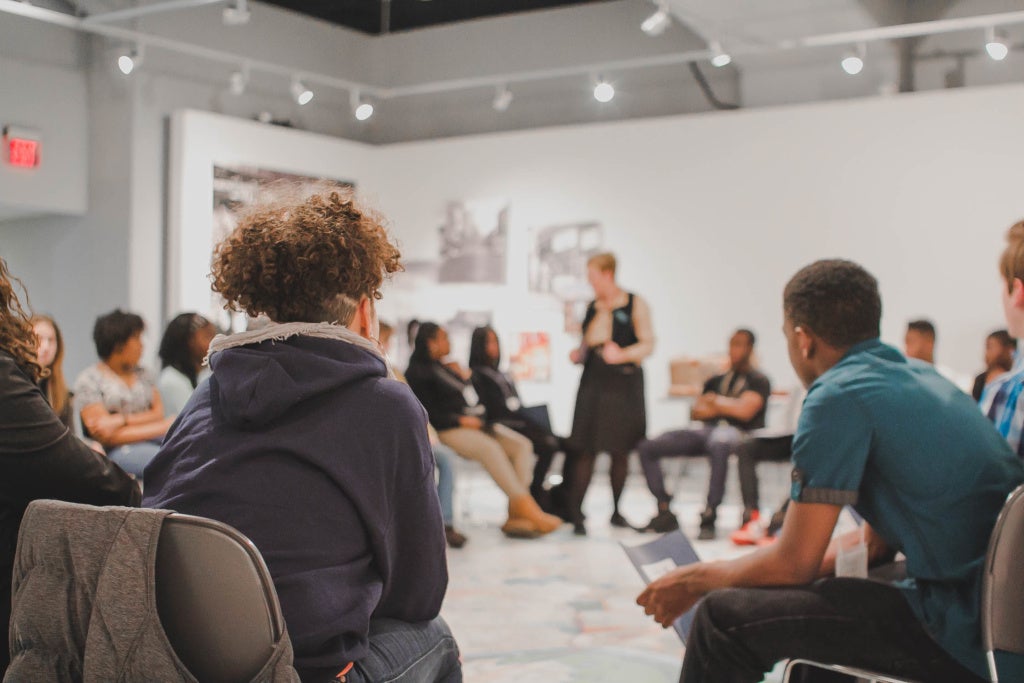
Photo by Brenda Nguyen
Students were asked to consider how Philadelphians against racism in Centuries past could work toward change. As the group brainstormed, Little brought out artifacts demonstrating ways that those opposed to slavery made the conversation about racism public.
“If you don’t talk about it, how do people know there’s another away?” asked Little. Attempts to force a conversation included an action plan to end slavery printed on silk, a dress made from cotton picked by non-slave labor, quills for signing petitions, and Black dolls dressed in Quaker garb that signaled to houseguests that the host-family was anti-racism.
After exploring how those measures might differ from ways that we voice opposition to injustice today, students shared ways that their communities can advocate for change. The group’s visit to the Philadelphia History Museum ended with a walking tour of the museum, where students learned more about the history of Octavius Catto, a young activist and the first African-American honored with a statue at Philadelphia’s City Hall.
The next stop in the experiential learning module brought students to the National Constitution Center, where the group explored the Center’s core exhibit with public program demonstrator Matthew Riffe. Riffe helped the group draw parallels between important documents like the Emancipation Proclamation and the Thirteenth Amendment, connecting them forward to the Civil Rights movement of the 1960s and activism of today. Students then teamed up for a spirited game of presidential trivia before being treated to a live performance of Freedom Rising, a 360-degree theatrical production that tells the story of the US Constitution and its role in the gradual journey towards freedom for all. Their tour of the Center ended in Signers’ Hall, where students interacted and took photos with life-sized statues of the Founding Fathers, signers of the US Constitution, and three dissenters.
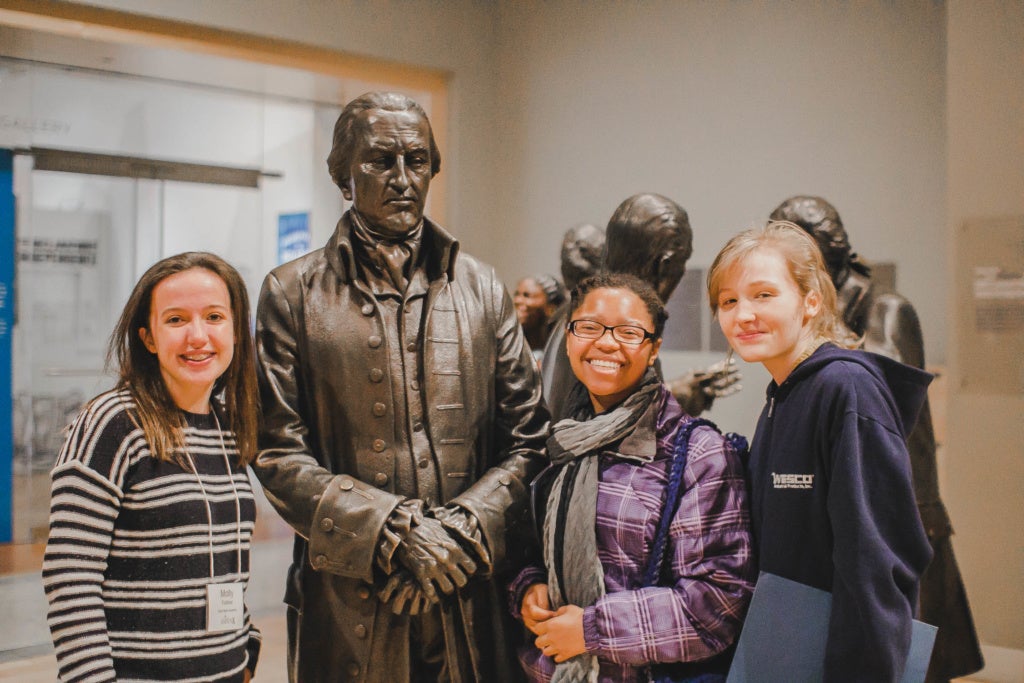
Photo by Brenda Nguyen
After an afternoon of engagement at the Philadelphia History Museum and National Constitution Center, the group reflected over dinner and were joined by Museum of the American Revolution manager of school programs and partnerships Adrienne Whaley. Each student was given a card detailing an ‘untold story’ from the American Revolution. They discussed the significance of subjects’ contributions, why those contributions are left out of dominant historical narratives, and the importance of historical accuracy and equal representation.
The following day, students reconvened at the Museum of the American Revolution to build and reflect on the prior day’s learning in the broader context of race and equity in the US. Fellowship for Race & Equity in Education founder and CEO Michelle Molitor led the conversation to help the group unpack beliefs and assumptions around their lived experiences.
The first module began with a reading of Elizabeth C. Leung’s “My Country ‘Tis Not of Thee,” which chronicles her never-ending journey to understand her identity as an Asian American woman, navigating between feeling too Asian to be truly American, but too American to be accepted back in her native country. Students discussed the importance of language and the perception of certain vernaculars as being ‘proper’ and how prejudice and bias factor into such perceptions. The group also addressed code switching and pressures of assimilation to gain acceptance.
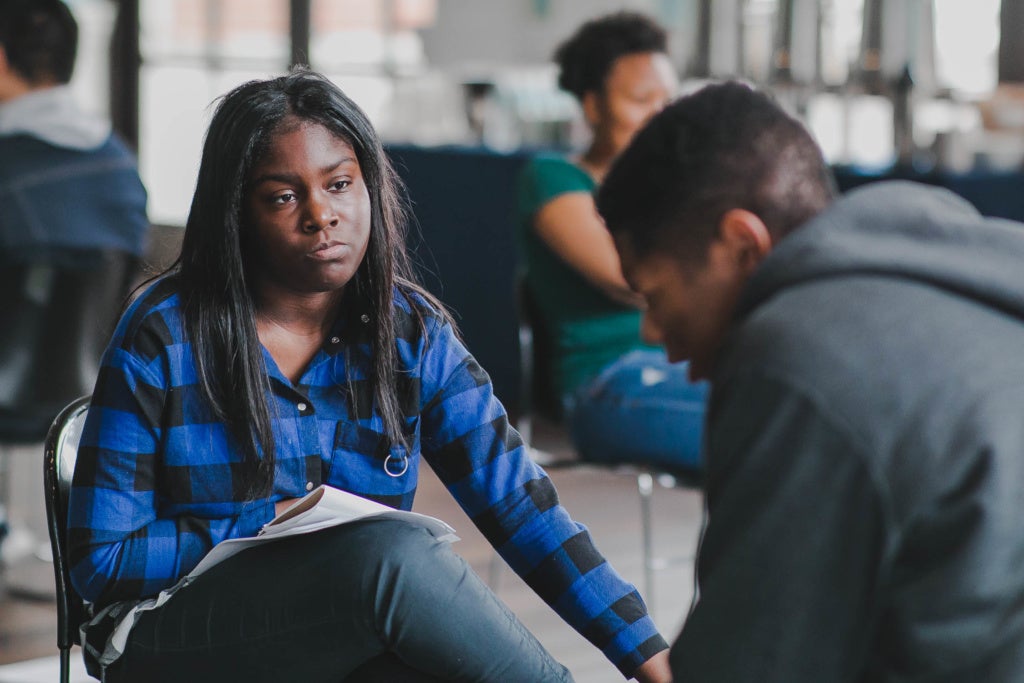
Photo by Brenda Nguyen
Students were then taken through an overview of the US’ history of racial oppression and inequity. “Our country begins with the genocide of one population and the enslavement of another,” said Molitor. “How does that history still impact us today?” The group again highlighted Philadelphia’s importance as a historic city that played a significant role in embedding racism into the fabric of America. The group emphasized the importance of diversity and inclusion in dominant historical narratives, especially those taught in K-12 history courses.
Boys’ Latin of Philadelphia Charter School freshman Zion Patton questioned, “Why do we have to pay or sign up for special classes to learn about our people, but we don’t have to do that to learn about white people?” Central High School senior Aaliyah Johnson responded that this is not how history deserves to be told. Strath Haven High School sophomore Alise Mackey shared that she has been lobbying her school to get African-American studies courses added to the curriculum.
Next, students watched a clip from the critically-acclaimed documentary 13th and discussed the impact of the criminal justice system on their schools, communities, families, and personal well-being. Many noted differences in how certain neighborhoods are treated by police. They questioned why such discrepancies exist and what can be done to reduce incarceration and the threat of violence at the hands of law enforcement.
Philly Youth Poetry Movement founder Greg Corbin joined the discussion to share opportunities for students to get involved in activism to address some of the issues they raised. Corbin also treated students to an impromptu performance of a poem on the profitability of private prisons.
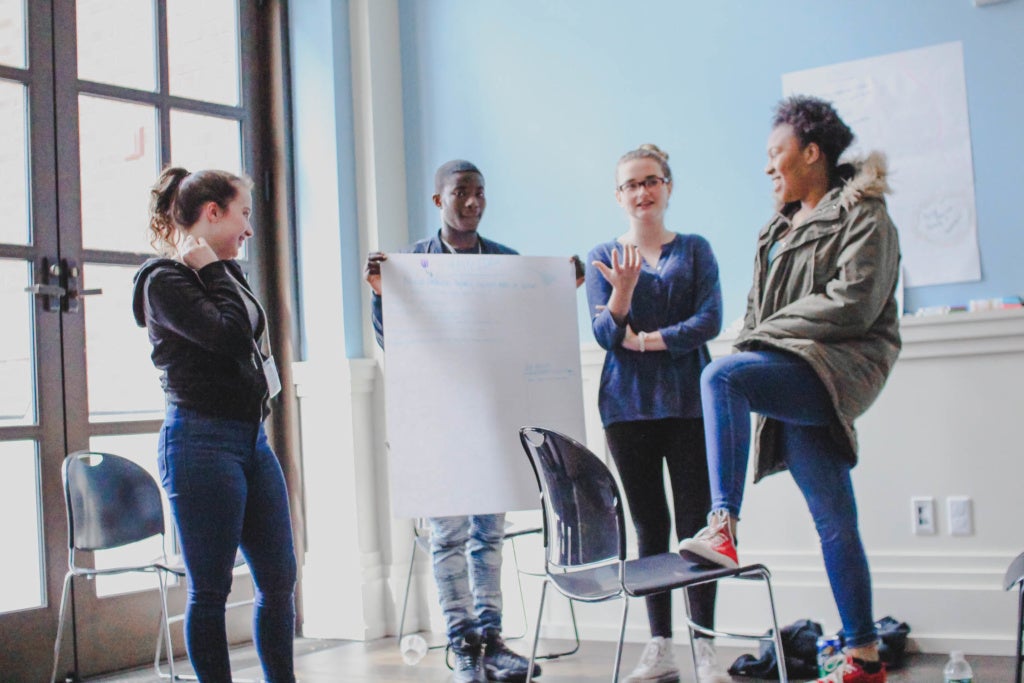
Photo by Brenda Nguyen
Students wrapped up their experience by brainstorming ways to use what they learned at AspenX to create solutions to racial inequities in their communities. Their ideas included elevating youth voice, educational and vocational programs in prisons, making African-American history a core curriculum subject, and initiatives to improve police-community relations.
Reflecting on the weekend, Pope John Paul II High School junior Hannah Conley said, “I feel more empowered – I’m going to take action.” Similarly, the experience helped Alex Calciano of Samuel Fels High School realize that “teens have as big of a voice as adults. Our age doesn’t hinder us.” KIPP DuBois Collegiate Academy sophomore Kenu Hand added that it showed her she “doesn’t have to wait to make change.”

